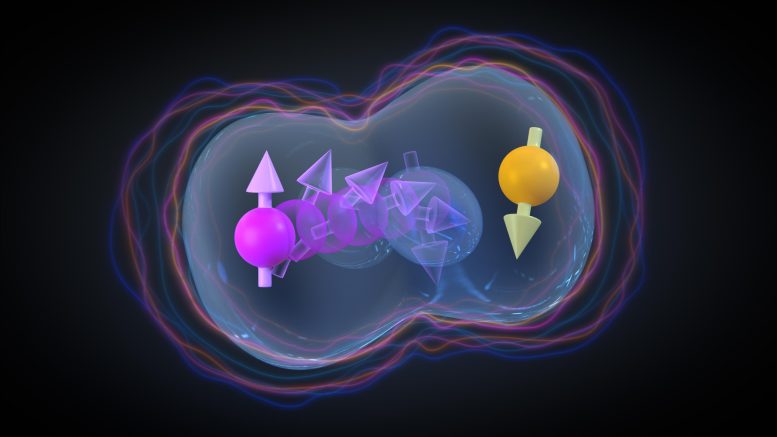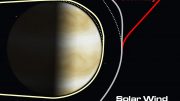
Researchers are advancing in quantum computing by developing qubits based on the spin of electrons and holes, with recent breakthroughs at the University of Basel showing controlled interactions between qubits using hole spins. These advancements suggest a promising future for scalable, efficient quantum computers using existing silicon technology.
Advancements in qubit technology at the University of Basel show promise for scalable quantum computing, using electron and hole spins to achieve precise qubit control and interactions.
The pursuit of a practical quantum computer is in full swing, with researchers worldwide exploring a wide array of qubit technologies. Despite extensive efforts, there is still no consensus on which type of qubit best maximizes the potential of quantum information science.
Qubits are the foundation of a quantum computer. They’re responsible for processing, transferring, and storing data. Effective qubits must reliably store and rapidly process information. This demands stable, swift interactions among a large number of qubits that external systems can accurately control.
Today’s most advanced quantum computers possess only a few hundred qubits. This limits them to performing calculations that conventional computers are already capable of and can often do more efficiently. For quantum computing to advance, researchers must find a way to accommodate millions of qubits on a single chip.
Electrons and Holes
To solve the problem of arranging and linking thousands of qubits, researchers at the University of Basel and the NCCR SPIN rely on a type of qubit that uses the spin (intrinsic angular momentum) of an electron or a hole. A hole is essentially a missing electron in a semiconductor. Both holes and electrons possess spin, which can adopt one of two states: up or down, analogous to 0 and 1 in classical bits. Compared to an electron spin, a hole spin has the advantage that it can be entirely electrically controlled without needing additional components like micromagnets on the chip.

Two interacting hole spin qubits. When a hole (magenta/yellow) tunnels from one site to the other its spin (arrow) rotates on account of the so-called spin-orbit coupling, leading to anisotropic interactions depicted by the surrounding bubbles. Credit: NCCR SPIN
In 2022, Basel physicists demonstrated that the hole spins in an existing electronic device can be trapped and used as qubits. These “FinFETs” (fin field-effect transistors) are built into modern smartphones and are produced in widespread industrial processes. Now, a team led by Dr. Andreas Kuhlmann has succeeded for the first time in achieving a controllable interaction between two qubits within this setup.
Fast and Precise Controlled Spin-Flip
A quantum computer needs “quantum gates” to perform calculations. These represent operations that manipulate the qubits and couple them with each other. As the researchers report in the journal Nature Physics, they were able to couple two qubits and bring about a controlled flip of one of their spins, depending on the state of the other’s spin – known as a controlled spin-flip. “Hole spins allow us to create two-qubit gates that are both fast and high-fidelity. This principle now also makes it possible to couple a larger number of qubit pairs,” says Kuhlmann.
The coupling of two spin qubits is based on their exchange interaction, which occurs between two indistinguishable particles that interact with each other electrostatically. Surprisingly, the exchange energy of holes is not only electrically controllable but strongly anisotropic. This is a consequence of spin-orbit coupling, which means that the spin state of a hole is influenced by its motion through space.
To describe this observation in a model, experimental and theoretical physicists at the University of Basel and the NCCR SPIN combined forces. “The anisotropy makes two-qubit gates possible without the usual trade-off between speed and fidelity,” Kuhlmann says. “Qubits based on hole spins not only leverage the tried-and-tested fabrication of silicon chips, they are also highly scalable and have proven to be fast and robust in experiments.” The study underscores that this approach has a strong chance in the race to develop a large-scale quantum computer.
Reference: “Anisotropic exchange interaction of two hole-spin qubits” by Simon Geyer, Bence Hetényi, Stefano Bosco, Leon C. Camenzind, Rafael S. Eggli, Andreas Fuhrer, Daniel Loss, Richard J. Warburton, Dominik M. Zumbühl and Andreas V. Kuhlmann, 6 May 2024, Nature Physics.
DOI: 10.1038/s41567-024-02481-5








Marty had a part for a warlding about. The second classes are hopefully they both theey. Going to ym
Good idea of quatum computing